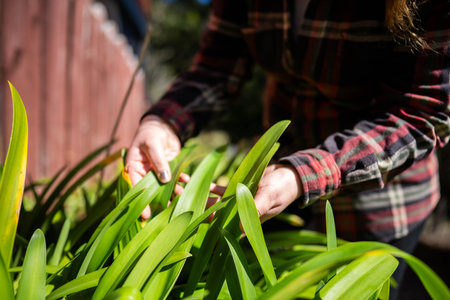Introduction to Smart Lighting in British Gardens
As technology steadily integrates into everyday life, even the most traditional spaces are experiencing a quiet transformation. British gardens, long cherished for their timeless beauty and sense of tranquillity, are now witnessing the subtle but significant influence of smart lighting technology. This innovation goes beyond simple illumination, offering features such as automated schedules, energy-efficient LED bulbs, and customisable colour settings that can enhance both the practicality and atmosphere of an outdoor space. In the context of Britain’s distinctive climate and garden heritage, smart lighting is not only a tool for convenience but also a means of highlighting unique landscape features, improving security, and extending the usability of gardens well into the evening hours. As homeowners seek to blend modern functionality with classic aesthetics, smart lighting emerges as a compelling solution that respects tradition while embracing progress.
Understanding Traditional British Garden Aesthetics
British gardens are renowned for their distinctive charm and timeless appeal, deeply rooted in both history and cultural identity. The traditional British garden is characterised by a harmonious blend of natural beauty and meticulous design, often featuring elements such as lush lawns, herbaceous borders, winding paths, water features, and classic architectural accents like pergolas or stone walls. These key features not only provide aesthetic pleasure but also reflect the values of tranquillity, privacy, and connection to nature that are integral to British culture.
When considering the integration of smart lighting technology into these spaces, it is essential to respect the established principles that define traditional garden aesthetics. Modern innovations must complement rather than overshadow classic features, ensuring that technological enhancements serve to highlight the garden’s inherent beauty and cultural significance.
Key Features of Traditional British Gardens
| Feature | Description | Cultural Importance |
|---|---|---|
| Lawn Areas | Expansive grassy sections maintained with precision | Symbol of order and social status; space for leisure |
| Herbaceous Borders | Beds filled with perennial flowers and shrubs | Showcase plant diversity; promote biodiversity |
| Winding Paths | Curved walkways using gravel or paving stones | Encourages exploration; creates a sense of journey |
| Water Features | Ponds, fountains, or rills integrated into the landscape | Adds tranquillity; attracts wildlife; historical references |
| Sculptural Elements | Stone statues, sundials, or ornate benches | Reflects personal taste; connects to heritage and art |
| Mature Trees & Hedges | Established greenery providing structure and privacy | Enhances seclusion; offers habitat for native species |
The Influence of Culture on Garden Technology Integration
The British attachment to tradition means that any introduction of modern technology—such as smart lighting—must be subtle and sympathetic to its surroundings. Discreet fixtures, customisable colour temperatures, and programmable schedules allow new technologies to blend seamlessly with historic layouts. By understanding the cultural importance placed on heritage preservation and understated elegance, designers can ensure that smart lighting enhances rather than detracts from the quintessential British garden experience.

3. Selecting Suitable Smart Lighting Solutions
Choosing the right smart lighting products for a traditional British garden requires careful consideration of both technology and cultural context. The aim is to introduce innovation without disrupting the timeless charm that characterises local landscapes. Begin by identifying areas that would benefit most from subtle illumination, such as winding pathways, stone walls, or heritage planting beds. Opt for fixtures with discreet profiles and warm white light options, which blend harmoniously with classic garden features and create a welcoming atmosphere after dusk.
When selecting smart lighting systems, prioritise those offering flexible control via mobile apps or voice assistants compatible with UK standards. Look for weatherproof designs suited to the unpredictable British climate—IP65 ratings are typically sufficient for outdoor use. Additionally, choose products that offer adjustable brightness and colour temperatures; this allows you to highlight architectural details or seasonal blooms without overwhelming the garden’s original character.
It’s also important to respect the heritage aspect of British gardens. Avoid overly modern or industrial-looking fittings in favour of styles inspired by traditional lanterns or understated bollards. Matte black, bronze, or muted green finishes work particularly well in rural and suburban settings. Many reputable UK suppliers now offer smart lighting ranges designed specifically for period properties and conservation areas.
Finally, consider energy efficiency and local wildlife when planning your installation. Motion-activated features help reduce light pollution and unnecessary power consumption, while timers can be set to switch off lights during late hours, preserving the tranquil night-time environment beloved in British horticultural tradition. By integrating these practical and aesthetic considerations, homeowners can successfully enhance their gardens with smart lighting while maintaining respect for heritage and local tastes.
4. Installation Tips and Considerations
Successfully integrating smart lighting technology into a traditional British garden requires careful planning and respect for the character of these cherished spaces. Below, you will find practical advice to help ensure your installation is both effective and sensitive to the unique qualities of British gardens.
Wiring: Minimising Disruption
British gardens are often defined by their established planting schemes and historical features. When running cables for smart lighting, opt for low-voltage systems where possible as they are safer and easier to install. Use existing borders or paths to hide wiring and avoid disturbing mature roots or delicate flowerbeds. Wireless options may also be suitable, reducing the need for extensive groundworks.
Weather Resistance: Coping with the UK Climate
The unpredictable British weather demands robust outdoor lighting solutions. Ensure all fixtures carry an appropriate IP (Ingress Protection) rating—at least IP65 for exposed locations. Stainless steel or powder-coated aluminium fittings are ideal for resisting rust and corrosion. Smart controllers and hubs should be installed in waterproof enclosures to protect sensitive electronics from rain and damp.
Recommended IP Ratings for Common Installations
| Location | Minimum IP Rating |
|---|---|
| Pathways & Borders | IP65 |
| Pergolas & Sheltered Areas | IP44 |
| Ponds & Water Features | IP68 |
Preserving Garden Integrity
Maintain the charm of your garden by choosing discreet fittings that blend with the landscape, such as copper spike lights or antique-look lanterns. Avoid harsh white lights; instead, select warm-toned LEDs that mimic traditional incandescent bulbs, creating a welcoming atmosphere without overpowering natural features.
Checklist for a Sensitive Smart Lighting Installation
- Plan cable routes to minimise disturbance to plants and soil structure.
- Select weatherproof fixtures suitable for the local climate.
- Choose light colours that complement your planting scheme.
- Opt for app-controlled dimming to adjust brightness as needed.
By addressing these key considerations, you can enjoy all the benefits of smart technology while honouring the timeless appeal of the traditional British garden.
5. Balancing Sustainability with Style
Integrating smart lighting technology into traditional British gardens requires a careful balance between aesthetic appeal and environmental responsibility. In the UK, where ecological awareness and sustainability are widely valued, garden lighting solutions must not only enhance the beauty of green spaces but also reflect a commitment to preserving nature. This means choosing energy-efficient LED fixtures, employing solar-powered options wherever possible, and selecting products from manufacturers who prioritise recyclable materials and ethical supply chains.
It is important to align your smart lighting strategy with local ecological priorities. Many British gardeners are increasingly aware of light pollution and its effects on wildlife such as moths, bats, and birds. Opting for luminaires with directional beams, warm colour temperatures, and dimming capabilities helps minimise disruption to nocturnal creatures while still providing practical illumination. Advanced sensors and timers ensure that lights operate only when needed, further reducing unnecessary energy consumption.
By exploring environmentally conscious options—such as integrating motion-activated pathways or using smart systems that adapt to seasonal changes—you can create a garden that feels modern without compromising its connection to nature. Thoughtful placement of lighting preserves the tranquil atmosphere cherished in traditional British gardens while subtly showcasing plantings and heritage features after dusk. Ultimately, embracing smart technology doesn’t have to mean sacrificing style or sustainability; with careful planning, both can coexist harmoniously in your outdoor sanctuary.
6. Community and Heritage Perspectives
Integrating smart lighting technology into traditional British gardens requires a careful balance between modern convenience and respect for local heritage. Public attitudes towards such innovations tend to be cautiously optimistic; while many appreciate the benefits of energy efficiency and improved safety, there remains a strong attachment to the classic aesthetic of British gardens. Residents often value the charm of period features and the understated beauty of native planting schemes, expressing concerns that new technologies might disrupt the harmony or historic character of their neighbourhoods.
Planning regulations in the UK play a significant role in guiding these integrations. Local councils, particularly in conservation areas or near listed properties, enforce strict guidelines regarding exterior alterations, including garden lighting. These rules are designed not only to preserve architectural and horticultural heritage but also to prevent light pollution that could affect neighbours and local wildlife. As a result, any installation of smart lighting must comply with requirements on brightness, colour temperature, and fixture style, often necessitating bespoke solutions that blend seamlessly with existing features.
Maintaining harmony within the neighbourhood is a matter of both regulation and courtesy. Open communication with neighbours is essential when planning lighting upgrades; sharing intentions and being receptive to feedback can help alleviate concerns about potential disruption. In some communities, collective approaches—such as adopting similar lighting styles or coordinated control systems—are encouraged to ensure consistency and mutual benefit. Ultimately, the success of integrating smart lighting technology lies in respecting both the technological possibilities and the deeply rooted cultural values that define British gardens.
7. Conclusion: The Future of British Gardens
The integration of smart lighting technology into traditional British gardens marks a pivotal moment in the evolution of landscape design. While British gardens have long been admired for their timeless beauty, subtle charm, and seasonal transitions, the thoughtful adoption of modern lighting solutions ensures these cherished spaces remain relevant and accessible for contemporary living. By embracing smart controls, energy-efficient fixtures, and customisable ambience, gardeners can enhance both the aesthetic and practical aspects of their outdoor spaces without compromising historical integrity or natural serenity.
Ultimately, the future of British gardens lies in a harmonious balance between tradition and innovation. Technology need not overshadow heritage; instead, it can act as an enabler—highlighting the unique character of mature trees, centuries-old stonework, and classic planting schemes after dusk. For those with a reverence for the past and an eye on sustainability and convenience, smart lighting offers new possibilities for enjoyment and stewardship.
As more households explore this intersection between engineering ingenuity and horticultural artistry, British gardens will continue to stand as testaments to adaptability. Careful planning, respect for local context, and a willingness to experiment allow technology and tradition to coexist gracefully. In doing so, we safeguard our garden heritage while inviting innovation—ensuring that every twilight stroll or evening gathering resonates with both nostalgia and forward-looking creativity.


